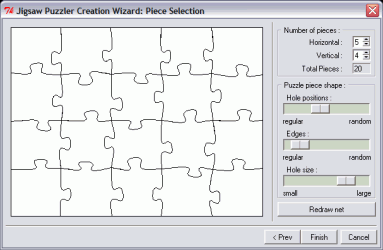tkGUIs of various applications
GUI's for applications
written approx. 1985 - 2008

tkGUIs of various applications
GUI's for applications
|

|
|
INTRODUCTION: Below are "thumbnails" of tcl-tk GUIs --- arranged in application groups --- audio, plotting, engineering, medical, etc. You can use the table-of-contents below to go directly to pictures in these category-groups. OR you can simply scroll down this page to spot pictures of interest.
UPDATE 2017: Since this web page was assembled in 2008, some sites have accumulated a rather large collection of code of Tcl-Tk scripts that provide many useful code examples, often with images of the GUI's --- sites such as: More web sites offering Tcl-Tk code and images may be found via a Tcl-Tk Links page on this site. Although the images on this page are rather old (2008 and before), I leave this page intact, because the images demonstrate the wide variety of GUI applications that can be implemented with Tcl-Tk. In addition, this page preserves some GUI images that may be lost when web sites go dead. How to view images on this page : If you hold the mouse-cursor over a thumbnail image (about 90 pixels high), a pop-up will appear that shows a brief text string describing the image. (This should work in most web browsers.)
Click on a thumbnail image to see a larger image
The larger sized images are shown in the same
Use the Back button of your browser
Alternatively:
|
Table of Contents:(links to sections of this page, below)
Some of these categories may overlap --- for example, some 3D applications could also be categorized as science-engineering. For simplicity, each example is placed in only one category. You can use a 'Find text' option of your web browser to look for images on a particular topic. For example, if you are looking for GUIs or applications involving music, search for 'music' or 'notes' or 'audio' or ... End of Table of Contents. Start of thumbnails (pictures). |
NOTE:
Many of the 3D apps require 'tcl3D' (formerly called 'togl') ---
a tcl-tk extension to perform Open GL (3D graphics) operations.
In fact, some of these images are from the 'tcl3d.org' site.
End of the groups of tkGUI images.
Here is a
SLIDESHOW (fit to viewport)
of the images in the groups above.
Alternatively, here is a
SLIDESHOW (no fit to viewport)
of the images in the groups above.
|
On creating 'spiffy-looking' Tk GUIs : There is a lot of discussion on the Tcler's Wiki site (wiki.tcl.tk) of the difficulty with getting Tk GUI's to blend well with the operating system (OS) desktop --- the Apple Mac desktop, the Microsoft Windows desktop, and, especially, the Linux/Unix desktop. The out-of-the-box experience with Tk on the Linux OS has garnered a lot of complaints. Because of that (and because I am interested in Tcl-Tk development on Linux), a lot of the GUI's that I have collected above are Linux GUIs, rather than GUIs for the Apple or Microsoft operating systems. There are applications above that have nice-looking GUIs on Linux. For example, the Russian 'sk1' vector editing application and some of the 'skinned' audio applications like Coccinella and VebKlaso Player [VK Player]. Unfortunately, the description of how the skins for VK Player were done is available in Portuguese, not English, at the pragana.net site. But there is a fairly detailed description in English here (wiki.tcl.tk/13409 - 'Managed and shaped toplevel' by Rildo Pragana). It would be helpful to the popularizaton of Tk, especially on Linux, if this window-shaping (i.e. skinning) capability were put in the Tcl-Tk 'core'. Here is Pragana's example to show an extremely non-rectangular shaped window over a typical console window.
In fact, I think the availability of this skinning capability in the Tcl-Tk 'core' would foster an avalanche of applications on Linux as people found an easy way to exercise their creativity on evermore surprising GUI interfaces. It would take a lot of work to determine if GUIs as nice as the nicest ones above could be made in vanilla Tcl-Tk, without using extensions like 'Tile' (ttk). It looks like the 'sk1' images were taken on Ubuntu-Linux. It may be helpful to track down what X11 widget settings they are using for fonts, border-widths, colors, etc. For reference, here are some of the Tcler's wiki pages that discuss the GUI appearance issues. (I put the date of last update of these wiki pages in parentheses after the link. These are dates that I found on 2009 Feb 19, or later. The last-update dates will help indicate which pages might be way out of date.)
|
|
Bottom of this These GUIs demonstrate the widgets, window-styles, and capabilities available via use of the the Tcl-Tk scripting language to generate GUI applications.
To return to a previously visited web page, click on the
Back button of your web browser, a sufficient number of times.
OR, use the History-list option of your browser.
< Go to Table of Contents, above. >
Page was created 2008 Dec 22.
|